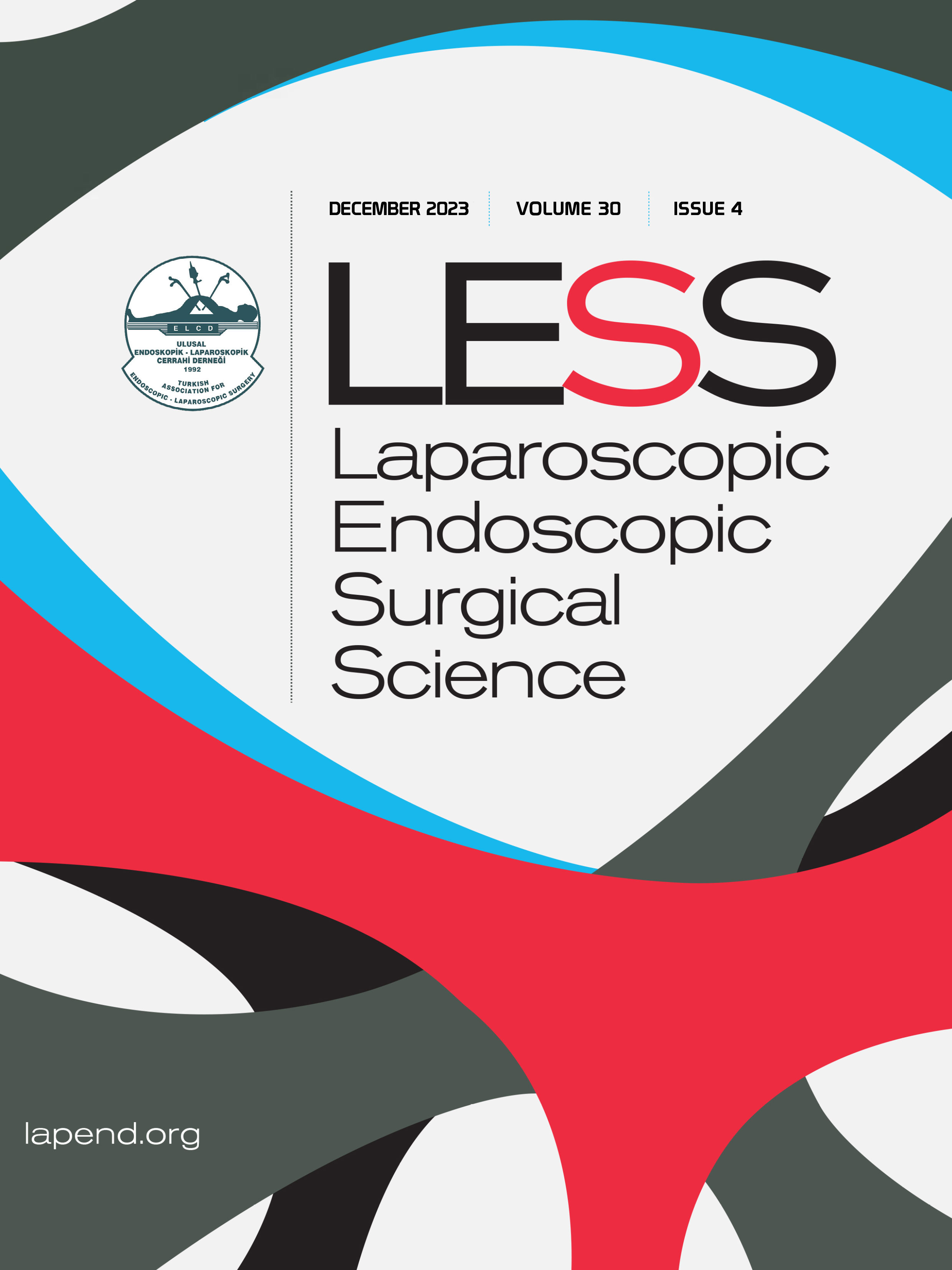Three-dimensional vs. two-dimensional laparoscopic approach in donor nephrectomy surgeries: A prospective randomized study
Arife Şimşek, Sertaç Usta, Ertuğrul Karabulut, Gökalp Okut, Fatih Özdemir, Fatih Sümer, Sait Murat Doğan, Turgut Pişkin, Cüneyt KayaalpDepartment of General Surgery, Inonu University Faculty of Medicine, Malatya, TürkiyeINTRODUCTION: This prospective randomized study aimed to compare the effectiveness and outcomes of three- dimensional (3D) versus two-dimensional (2D) laparoscopic systems in donor nephrectomy.
METHODS: A total of 25 laparoscopic donor nephrectomy cases, which were performed between March 30, 2022, and January 12, 2023, were randomized into 2D and 3D groups. Donor demographics, perioperative data, postoperative complications, pain scores, hospital stay, and graft function up to 18 months were evaluated.
RESULTS: No significant differences were observed between the 2D (n=12) and 3D (n=13) groups regarding donor characteristics, operative time, warm ischemia time, complication rates, transfusion requirements, postoperative pain, or length of hospital stay. Although multiple renal vessels were more frequent in the 2D group (p=0.039), this did not affect overall outcomes. Postoperative kidney function remained comparable in both groups. The use of 3D systems did not result in statistically significant improvements in surgical metrics but may provide enhanced depth perception.
DISCUSSION AND CONCLUSION: While 3D laparoscopy may improve depth perception and spatial orientation, this study did not demonstrate statistically significant advantages over 2D systems in donor nephrectomy outcomes. Larger, multicenter studies are needed to further assess the clinical impact of 3D laparoscopy in this setting.
Keywords: Laparoscopic donor nephrectomy, laparoscopic systems, living donor nephrectomy, three-dimensional renal transplantation
Manuscript Language: English















